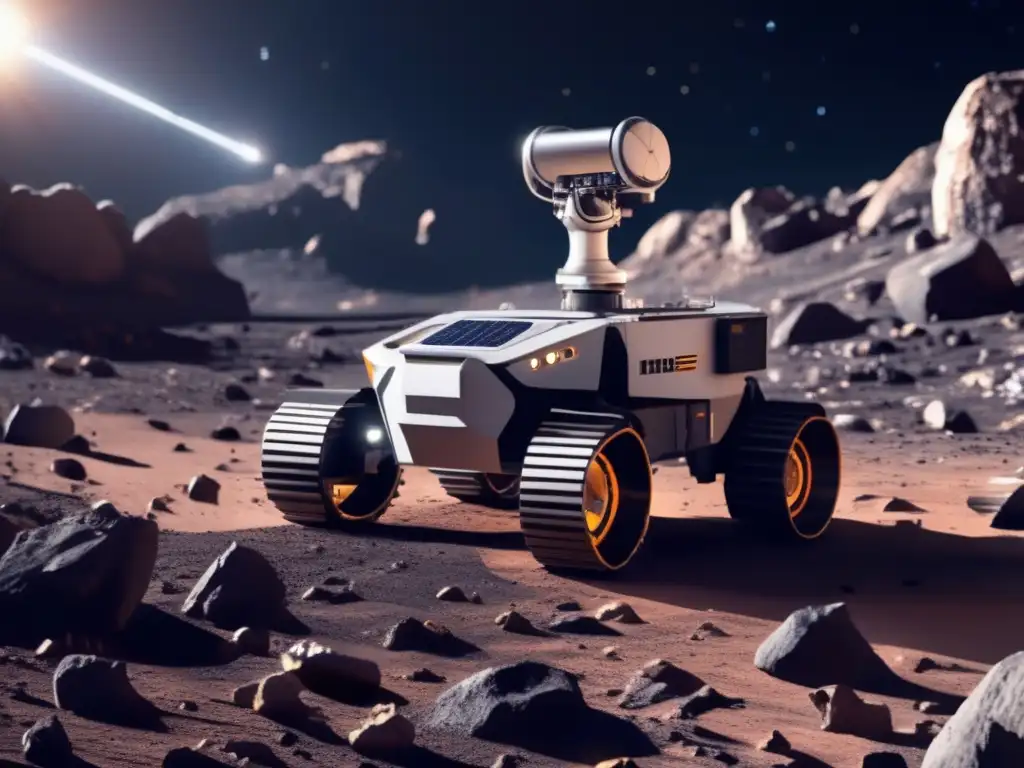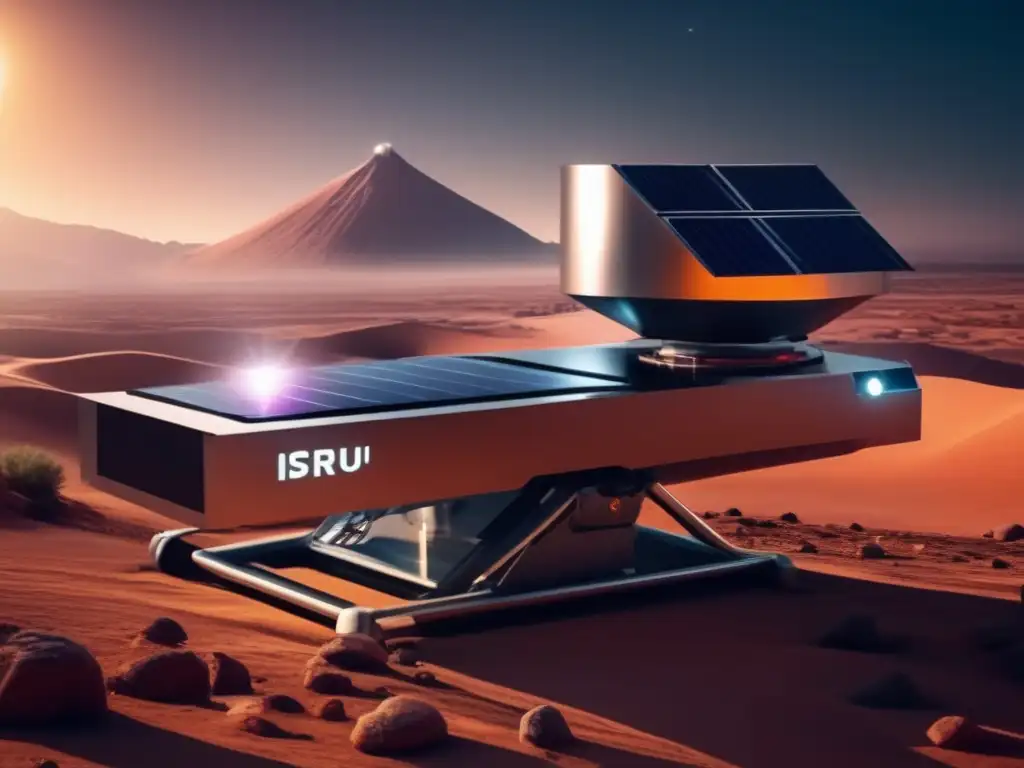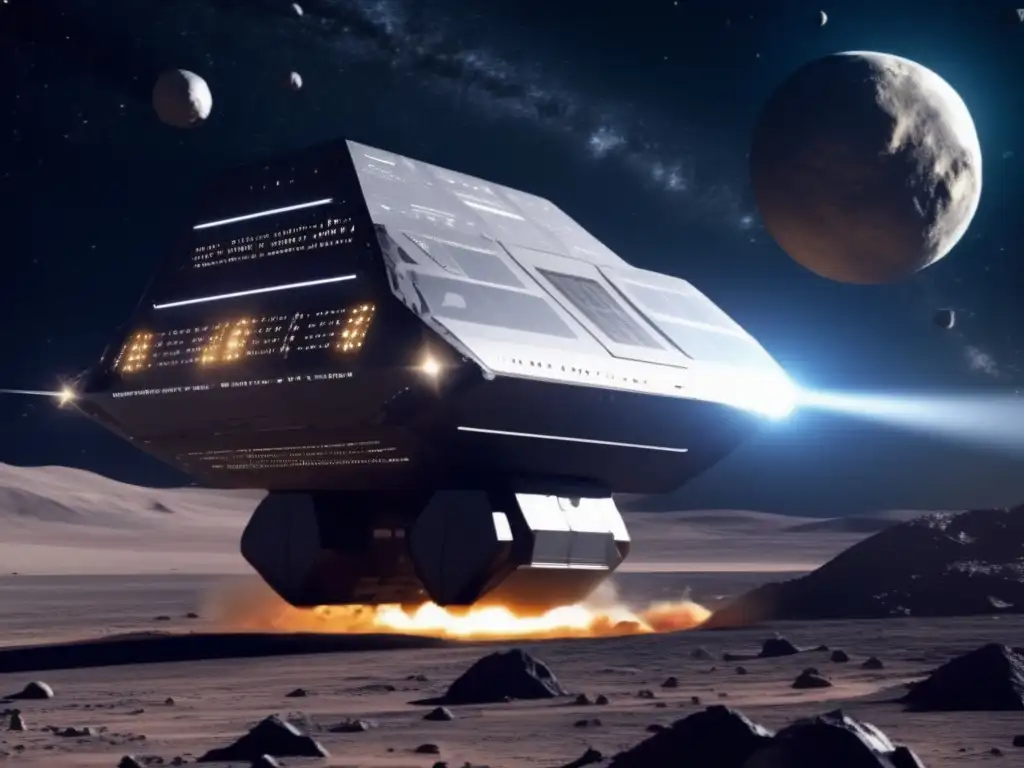Innovative Technologies For Asteroid Prospecting

Introduction
Welcome to Asteroid Realm, your ultimate source of information on the fascinating world of asteroids. In this article, we will delve into the innovative technologies that are revolutionizing the field of asteroid prospecting and paving the way for the future of space mining. As humanity looks beyond Earth for valuable resources, asteroids hold immense potential for supplying rare metals, water, and other precious materials. Let's explore the groundbreaking technologies that are making asteroid mining a reality.
Advanced Remote Sensing Systems

Lidar Technology for Enhanced Asteroid Characterization
Lidar (Light Detection and Ranging) technology has emerged as a game-changer in asteroid prospecting. By emitting laser pulses and measuring the time it takes for the reflections to return, lidar systems can create highly detailed 3D maps of asteroid surfaces. This allows scientists to precisely analyze the composition, topography, and potential resources of these celestial bodies. Lidar-equipped spacecraft, such as NASA's OSIRIS-REx, have already revealed valuable insights about asteroid Bennu's mineralogy and surface features.
Hyperspectral Imaging for Mineral Identification
Hyperspectral imaging combines advanced optics with spectroscopy techniques to identify minerals based on their unique spectral signatures. These systems can capture data across hundreds of narrow bandwidths, enabling the precise identification of mineral compositions on asteroids. By analyzing the reflected sunlight or emitted thermal radiation, scientists can determine the presence of economically valuable elements like platinum, gold, and rare-earth metals. Hyperspectral imaging is revolutionizing our ability to detect and assess asteroid resources.
Radar Systems for Determining Asteroid Composition
Radar systems play a crucial role in asteroid prospecting by providing detailed information about their shape, size, and surface roughness. By emitting radio waves towards asteroids and measuring the reflected signals, radar systems can accurately determine the composition and density of these celestial objects. This information is essential for evaluating their mining potential and designing optimal extraction techniques. NASA's Goldstone Deep Space Communications Complex is an excellent example of a facility dedicated to radar-based asteroid research.
Autonomous Robotic Explorers

Nano-rovers for In-Situ Asteroid Exploration
Nano-rovers are compact robotic vehicles designed for in-situ exploration of asteroids. Equipped with cameras, spectrometers, and manipulator arms, these autonomous explorers can navigate the rugged terrains of asteroids and collect valuable samples. Nano-rovers, such as JAXA's MINERVA-II-1A and MINERVA-II-2A, have successfully landed and explored the surface of asteroid Ryugu, providing invaluable data about its geological composition and potential resources.
Prospector Drones for Surface Mapping and Sample Collection
Prospector drones are advanced aerial vehicles specifically designed for surface mapping and sample collection on asteroids. Equipped with high-resolution cameras, spectrometers, and sampling mechanisms, these drones can efficiently analyze the mineralogy of asteroid surfaces and gather samples for further analysis. The European Space Agency's (ESA) PROSPECT project aims to develop and deploy prospector drones for future asteroid mining missions, bringing us closer to commercially viable space resource extraction.
Asteroid Anchoring Systems for Mining Operations
Extracting resources from asteroids presents unique challenges due to their low gravity and irregular shapes. To overcome these obstacles, innovative asteroid anchoring systems are being developed. These systems utilize harpoons, drills, and adhesive technologies to firmly attach mining equipment to the asteroid's surface, allowing for stable and efficient mining operations. Deep Space Industries' Dragonfly system is a notable example of an anchoring technology designed specifically for asteroid resource extraction.
In-Situ Resource Utilization (ISRU)

Water Extraction and Refining Technologies
Water is a crucial resource in space exploration, serving as propellant for spacecraft and potentially supporting life. Asteroids contain significant amounts of water locked within their minerals and icy regolith. Innovative technologies, such as microwave heating and electrolysis, are being developed to extract and refine water from asteroids. NASA's Resource Prospector mission was a step in this direction, aiming to demonstrate the feasibility of extracting water from lunar and asteroid resources.
In-Situ Metals Extraction and Refining Techniques
Asteroids are rich in valuable metals like platinum, gold, and nickel, which can be utilized both in space and on Earth. Advanced extraction and refining techniques are being explored to maximize the efficiency of metal extraction from asteroid resources. These techniques include vacuum metallurgy, electrolysis, and thermal processes that enable the separation and purification of metals. Companies like Planetary Resources and Deep Space Industries are actively involved in developing these technologies.
Asteroid 3D Printing for Construction
Building structures in space presents significant logistical challenges, but asteroids can provide an abundant source of raw materials. Asteroid 3D printing is a revolutionary concept that utilizes additive manufacturing techniques to create structures using in-situ resources. By processing asteroid regolith and utilizing binding agents, it becomes possible to fabricate habitats, spacecraft components, and other infrastructure directly on asteroids. This innovative approach significantly reduces the cost and complexity of space construction.
Frequently Asked Questions

-
Can asteroid mining be profitable?
Asteroid mining has the potential to be highly profitable due to the abundance of valuable resources present in asteroids. However, its profitability depends on the advancements in mining technologies, resource extraction efficiency, and the market demand for these resources.
-
Are there legal considerations for asteroid mining?
Yes, there are legal considerations surrounding asteroid mining. The United Nations Outer Space Treaty prohibits national appropriation of celestial bodies, but it allows for commercial exploitation under the supervision of the international community. Various countries and organizations are actively working on establishing legal frameworks for asteroid mining operations.
-
What are the potential risks of asteroid mining?
Potential risks of asteroid mining include technological challenges, space debris generation, and environmental impacts on celestial bodies. It is crucial for mining operations to be conducted responsibly and sustainably to minimize these risks.
-
How can asteroid mining benefit humanity?
Asteroid mining can benefit humanity in multiple ways. It can provide a sustainable source of rare metals and resources for future space exploration missions. Additionally, the utilization of asteroid-derived resources can reduce the burden on Earth's environment and foster the growth of new industries.
-
What are some upcoming asteroid mining missions?
Several upcoming missions aim to explore and eventually extract resources from asteroids. Notable examples include NASA's Psyche mission to the metallic asteroid Psyche and the ESA's Hera mission, which will study the Didymos binary asteroid system.
Conclusion
The future of asteroid mining is brimming with potential, thanks to the innovative technologies we have explored in this article. Advanced remote sensing systems, autonomous robotic explorers, and in-situ resource utilization techniques are revolutionizing our approach to space mining. As we continue to push the boundaries of scientific exploration, it is imperative to engage in responsible and sustainable practices to ensure the long-term viability of asteroid mining. Join us at Asteroid Realm as we uncover more fascinating insights into the captivating realm of asteroids.
Feel free to share your thoughts and questions in the comments section below. Don't forget to subscribe and connect with us on social media to stay updated with the latest developments in asteroid prospecting and mining. Thank you for being a part of our asteroid exploration journey!
Additional Resources

For further reading on asteroid mining and related topics, please refer to the following resources:
- NASA - Asteroid Redirect Mission
- Planetary Resources - Asteroid Mining Company
- ESA - Asteroid Impact Mission
- Space.com - Infographic on Asteroid Mining
 Job Creation And Economic Growth Through Asteroid Mining
Job Creation And Economic Growth Through Asteroid Mining Key Players In The Asteroid Mining Industry
Key Players In The Asteroid Mining Industry Life In The Age Of Asteroid Mining
Life In The Age Of Asteroid MiningIf you want to discover more articles similar to Innovative Technologies For Asteroid Prospecting, you can visit the Asteroid Mining and Resources category.
Leave a Reply

Articulos relacionados: